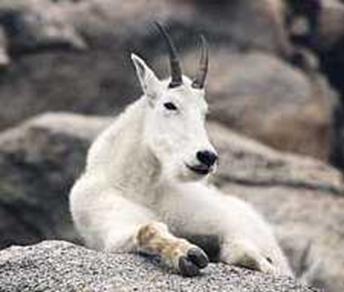


|
Artiodactyla:
The even-toed ungulates form the mammal order Artiodactyla. They are ungulates whose weight is borne about equally by the third and fifth toes, rather than mostly or entirely by the third as in perissodactyls. There are about 220 artiodactyl species, including many that are of great economic importance to humans. As with many animal groups, even-toed ungulates first appeared during the Early Eocene (about 54 million years ago). In form they were rather like today's chevrotains: small, short-legged creatures that ate leaves and the soft parts of plants. By the Late Eocene (46 million years ago), the three modern suborders had already developed: Suina (the pig group); Tylopoda (the camel group); and Ruminantia (the goat and cattle group). Nevertheless, artiodactyls were far from dominant at that time: the odd-toed ungulates (ancestors of today's horses and rhinos) were much more successful and far more numerous. Even-toed ungulates survived in niche roles, usually occupying marginal habitats, and it is presumably at that time that they developed their complex digestive systems, which allowed them to survive on lower-grade feed. The appearance of grasses during the Eocene and their subsequent spread during the Miocene (about 20 million years ago) saw a major change: grasses are very difficult to eat and the even-toed ungulates with their highly-developed stomachs were better able to adapt to this coarse, low-nutrition diet, and soon replaced the odd-toed ungulates as the dominant terrestrial herbivores. The artiodactyls fall into two groups which, despite underlying similarities, are rather different. The Suina (pigs, hippos, and peccaries) retain four toes, have simpler molars, short legs, and their canine teeth are often enlarged to form tusks. In general, they are omnivores and have a simple stomach (the two hippopotamus species and the babirusa are exceptions). It is possible that Suina is not a natural group. In particular, recent research suggests that the Hippopotamidae (which are likely derived from among the extinct group known as anthracotheres) may be more closely related to the ruminants than to the pigs. The camelids and the Ruminantia, on the other hand, tend to be longer-legged, to have only two toes, to have more complex cheek teeth well-suited to grinding up tough grasses, and multi-chambered stomachs. Not only are their digestive systems highly developed, they have also evolved the habit of chewing cud: regurgitating partly-digested food to chew it again and extract the maximum possible benefit from the end.
Lastly a group of artiodactyls, which molecular biology suggests were most closely related to Hippopotamidae, returned to the sea to become whales. The conclusion is that Artiodactyla, if it excludes Cetacea, is a paraphyletic group. For this reason, the term Cetartiodactyla was coined to refer to the group containing both artiodactyls and whales (though the problem could just as easily be resolved by recognizing Cetacea as a subgroup of Artiodactyla). |
